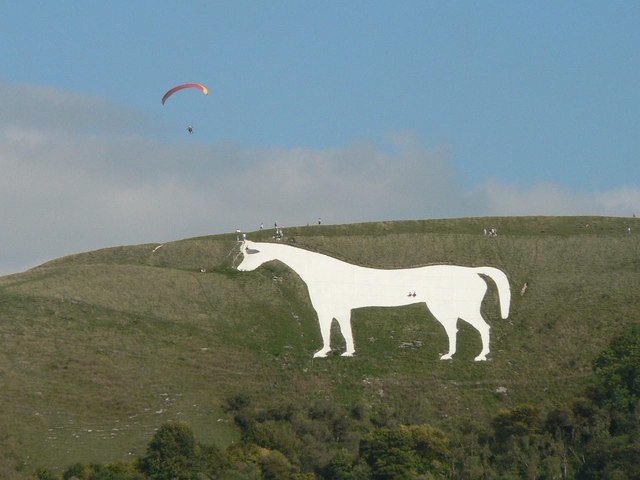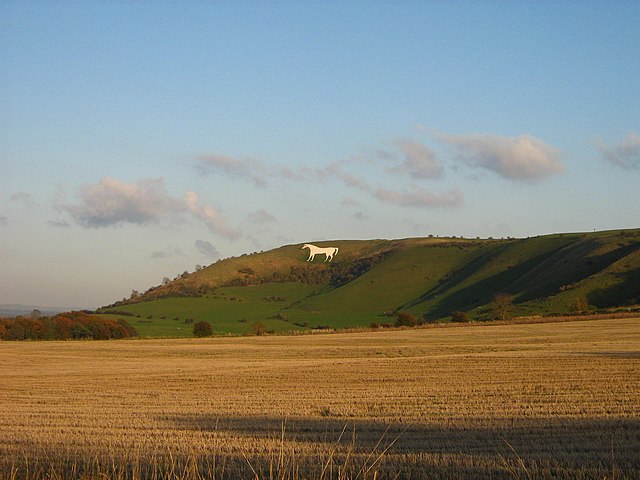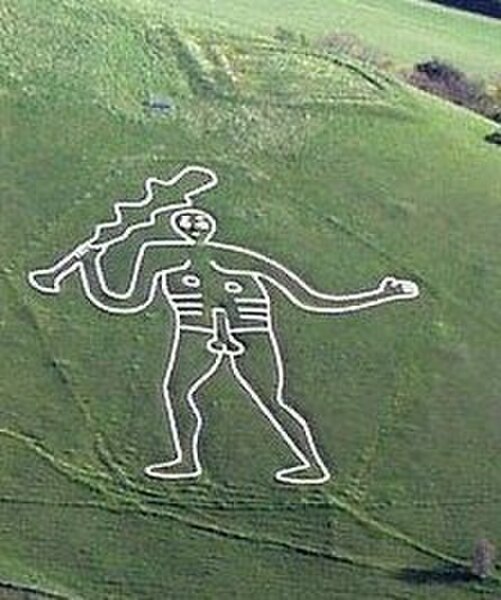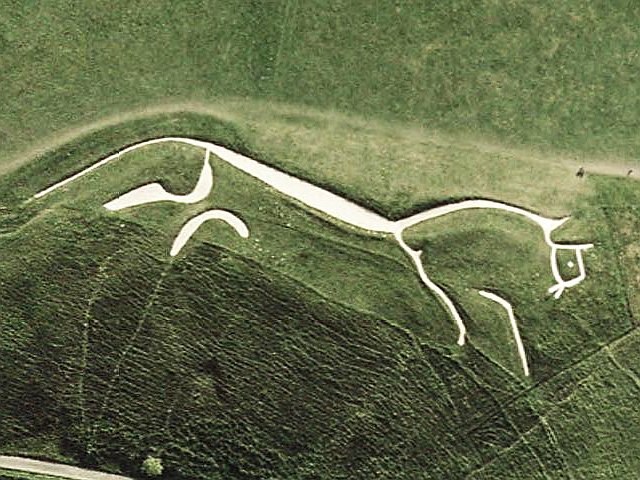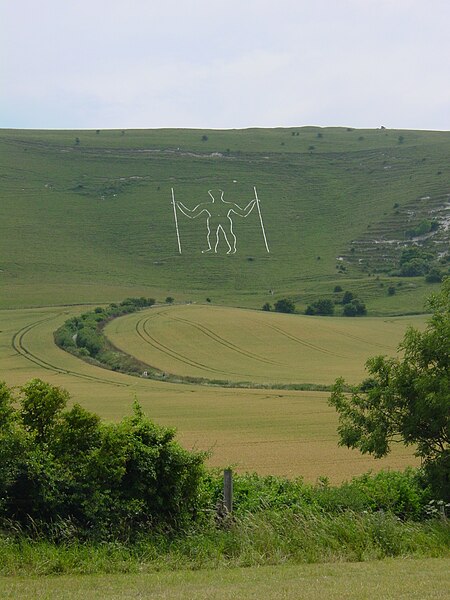Westbury White Horse or Bratton White Horse is a hill figure on the escarpment of Salisbury Plain, approximately 1.5 mi (2.4 km) east of Westbury in Wiltshire, England. Located on the edge of Bratton Downs and lying just below an Iron Age hill fort, it is the oldest of several white horses carved in Wiltshire. It was restored in 1778, an action which may have obliterated another horse that had occupied the same slope. A contemporary engraving from around 1772 appears to show a horse facing in the opposite direction that was rather smaller than the present figure. There is, however, no documentation or other evidence for the existence of a chalk horse at Westbury before 1772.
Paragliding above Westbury White Horse (August 2007)
An autumnal view of Westbury White Horse on the edge of Bratton Castle (October 2008)
Seen from White Horse Viewing Area
Viewed from near the edge of Bratton Downs before the surface treatment of 2007
A hill figure is a large visual representation created by cutting into a steep hillside and revealing the underlying geology. It is a type of geoglyph usually designed to be seen from afar rather than above. In some cases trenches are dug and rubble made from material brighter than the natural bedrock is placed into them. The new material is often chalk, a soft and white form of limestone, leading to the alternative name of chalk figure for this form of art.
The Cerne Abbas Giant chalk figure, near the village of Cerne Abbas in Dorset, England, is made by a turf-cut.
The Uffington White Horse at Uffington, Oxfordshire
The 18th-century Westbury White Horse near Westbury, Wiltshire
The Long Man of Wilmington seen from a distance

